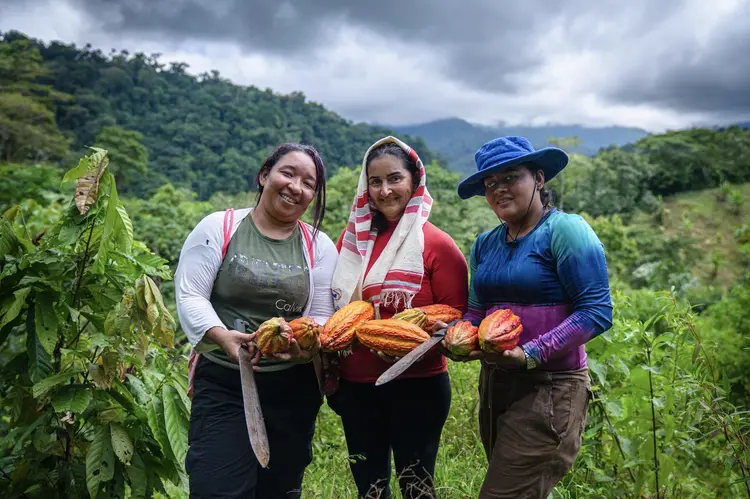
Gender-inclusive peace building can contribute towards more successful outcomes in countries experiencing conflict, new study confirms
By
In 2016, the Colombian government and FARC (the Revolutionary Armed Forces of Colombia) signed a peace deal to end one of the world’s longest-running civil wars.
In the time since, some 13,000 ex- guerilla fighters have turned in their weapons and, after more than 50 years of conflict, begun the often challenging transition back to civilian life. More than a third of them are women.
Enjoying this article? Check out our related reads:
It’s thanks to pressure from Colombian women – former FARC members and female peace activists who pushed for the right to participate in the peace talks – that the Colombian peace agreement set a global benchmark for gender-inclusive peace building.
Out of 578 agreed stipulations, 130 focused on women’s involvement and rights in areas ranging from rural reforms to the reintegration of ex-combatants to the implementation of the peace agreement itself. Eight years on, new research shows that prioritising stipulations such as these makes it more likely for peace agreements to succeed.
At the University of Notre Dame’s Kroc Institute for International Peace Studies, political scientist Madhav Joshi has followed the progress of the Colombian Peace Accords since negotiations began in 2012. After initially providing research support to the negotiators, the institute was mandated to monitor the agreement’s implementation, as Joshi explains: ‘We’re the only initiative in the world monitoring the implementation of a peace agreement in real time.’
The Kroc Institute tracks another 34 formal peace agreements (negotiated between 1989 and 2012 in 31 countries from Angola to the UK), but the Colombian peace agreement has been particularly interesting to study, Joshi says.
Over the years, research has indicated that gender equality and national security are linked, but with little empirical evidence to support the idea. ‘We tend to correlate women’s participation in peace building with success, but I think we are jumping to conclusions without actually knowing what happens five or ten years down the road. You have to find a way to understand how those small steps forward accumulate over time, and this is particularly important for understanding women’s role in peace-building success.’
Joshi’s analysis of the progress made in those years confirms a strong correlation: programmes with successful implementation of gender provisions showed significantly higher overall implementation rates. ‘So that tells me,’ Joshi explains, ‘that if you are really successful in addressing gender issues, then you are likely to have a really successful peace process. It’s likely that addressing gender issues, especially in a traditional society like Colombia, necessitates extensive foundational work that ultimately benefits society as a whole.’
Joshi emphasises that gender-specific provisions alone don’t guarantee successful peace implementation. In fact, his research shows that the implementation of gender-specific stipulations was seriously lagging behind that of gender-neutral ones. He says that a similar story can be seen in peace processes elsewhere, from the Philippines to South Sudan.
‘The next logical phase in this research is actually pinpointing the bottlenecks. Is it that, as a society, they are not receptive to gender issues? Is it a lack of capacity and resources, or is it simply a lack of political will?’
Despite the signing of the accord, conflict persists across Colombia. The country still has one of the largest internally displaced populations globally – more than five million people at the end of 2023 – which creates an extremely precarious situation for many Colombian women.
In January, another 18,000 people were forced to flee their homes in the northeast region of Catatumbo, where fierce clashes between two rival armed groups has resulted in some of the worst violence rural communities have experienced in recent years, highlighting key gaps in the implementation of the peace agreement.
‘This is an ongoing process,’ affirms Joshi. ‘We have a tendency to see the peace agreement as the end goal, but it isn’t. For example, I wouldn’t say that the peace process in Northern Ireland is over, right? A peace process is much more than a document – it’s the reforms that come from it.’



